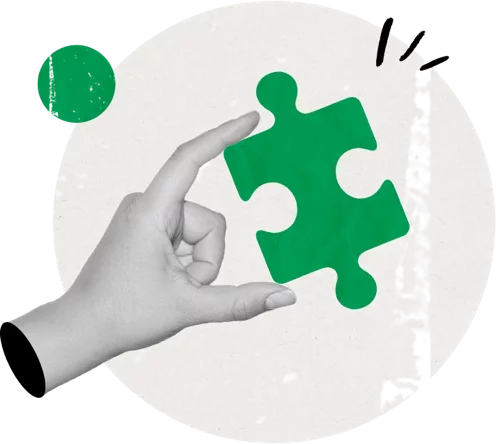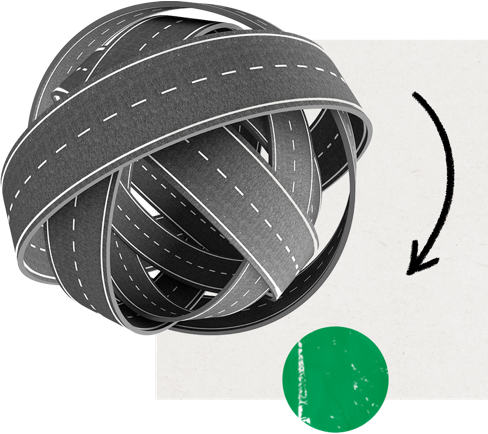
Prepare your business for change
Accelerate the transition of digitization and automation

It has become clear that our lives will be (and already are) impacted by the Covid-19 crisis due to the quarantine and certain social conditions which still remain in place even after the bell curve began to flatten. However, moving forward we will have to learn how to live with these new normal conditions while the process of restructuring the economic and social aspects of everyday life play out.
The main concern and most difficult question to answer right now is ‘how to bring businesses back into the world?’ Without a vaccine and a slow economic recovery, confidence in tomorrow is at an all-time low.
Of course, we’re not the first ones to face such a crisis, as well as having to adapt to a new normal after it has passed. We can’t only rely on historical examples for getting through such tense times. This is because we have more opportunities for change at our fingertips today. And that means more challenges along with them.
So how best to navigate this crisis when traditional metrics and assumptions are simply irrelevant? And how can we expect life to change in the new era?
73% of Americans say the way companies conduct themselves during COVID-19 will impact whether they do business with those brands in the future.
GfK, 2020
The world is actively struggling to put a lid on the viral pandemic and its lasting effects. For almost all countries, crisis-response efforts are in full motion:
All these points require resolve and quick response.
So what comes next?
The impacts on the economy and financial system may be the biggest in nearly a century.
As a result of the pandemic, the global economy is projected to contract sharply by –3 percent in 2020, much worse than the 2008–09 financial crisis.
Once the crisis has passed, businesses will be expected to return to an active marketplace that has drastically changed. Most industries will need to reactivate their supply chain, their leaders will be reassessing their entire business systems and planning accordingly.
Without a vaccine or effective prophylactic treatment, a rapid return to a potential viral spread is a real possibility. That’s why using this summer’s temporary virus “cease-fire” for expanding testing and surveillance capabilities, health-system capacities, and vaccine and treatment development to deal with a second surge may be a good idea.
The ‘return’ phase will change the preferences and expectations of individuals as citizens, employees, and consumers. We will have to look at many things from a completely different angle.
Hopefully, the crisis will reveal not only vulnerabilities but also opportunities to improve the performance and development of a business. As a result, we may get a stronger understanding of what makes a business more resilient to shocks, more productive, and better able to service customers should an unpredictable economic event occur.
And of course, not spending time, energy, and resources on fighting the aftermath of the epidemic will lead to a loss in what brought the world together on the global issue. This includes not observing the rules for personal hygiene, disrespecting someone’s personal space, reacting slowly to the onset of the disease, and an unwillingness to comply with government orders, etc.
Citizens may take a more active role in supporting their governments to shape economic activity, but business leaders will also be under pressure to follow popularly supported changes to policies and regulations.

Prepare your business for change
Accelerate the transition of digitization and automation
As businesses proceed into the post-coronavirus future, their challenge will be finding a balance between what worked before and how to adapt to the new normal.
At airSlate, we believe that all businesses and individuals can find success, no matter what the new conditions may be. The two points we consider as the most important for doing so are:
 Organizing work for a distributed workforce
Organizing work for a distributed workforce Being able to change practices and become more agile
Being able to change practices and become more agileLet’s dive a bit deeper into each of these points.
Facebook said it’s planning to shift towards a more remote workforce as a long-term strategy. The same is true for Twitter and many other big tech companies. Even if you don’t plan on switching completely to remote conditions, don’t write them off as unrealistic.
And in fact, switching to remote work isn’t much of a problem. According to many executives, the sudden increase in transitioning employees to remote work has gone smoothly.
So what is needed for remote work beyond a laptop? Companies have to help their staff keep office rhythms and norms associated with a traditional working routine. This means keeping ‘office hours’, having meetings, calls, training, etc.
The organizer and webcaster for TED Conferences have established virtual spaces so that while people are separate, they aren’t alone. The software company Zapier has set up random video pairings so that people who wouldn’t normally bump into each other in the hallway could have the opportunity to get to know each other.
We at airSlate continue the traditional ‘Random coffee’ meetings on Zoom and hold regular remote training sessions and calls to stay in touch.
Collaboration, flexibility, inclusion, and accountability are what businesses have to consider as the main values in the nearest future.
Organizing remote work the right way can contribute to building a more diverse, more capable, and happier workforce.
Start by implementing practices that speed up decision-making and execution while recovering from the crisis.
During and after the 2008 financial crisis, companies that were in the top fifth in performance were about 20 percentage points ahead of their peers. Eight years later, their lead had grown to 150 percentage points.
Being agile means being able to quickly reorganize strategy, structure, processes, people, and technology in a way that will immediately benefit your customers and employees depending on the economic conditions.
Ok, let’s stop repeating the word ‘agile’. By mentioning it we mean not only being able to change your business system as quickly as possible, but having the foresight to predict what will be needed in the near future. This may include:
Agile companies thus become more decentralized and less dependent on ‘traditional’ decision making. This means that they are less susceptible to shock from current and future crises.
Decisions that many companies make during a crisis are usually carried out faster, with more flexibility, and are more relevant than decisions made under normal circumstances. This is when any employee could reform an entire system. However, a transition towards being more agile will not work if it is not based on data. Companies have to pay critical attention to their analytics capabilities and consolidate the results to make their transition as effective as possible.
And of course, becoming agile also means retraining employees — an organization that is always learning is always improving.
Stop thinking about traditional methods or using past examples for dealing with crises. Stop hoping for a return to the good ol’ days. Focus on recovering revenue, rebuilding operations, rethinking your organization, and accelerating the adoption of digital solutions. Rethink your old goals and start discovering new opportunities. Become a leader who demonstrates that even an uncertain future can, with the right amount of effort, become a good one.